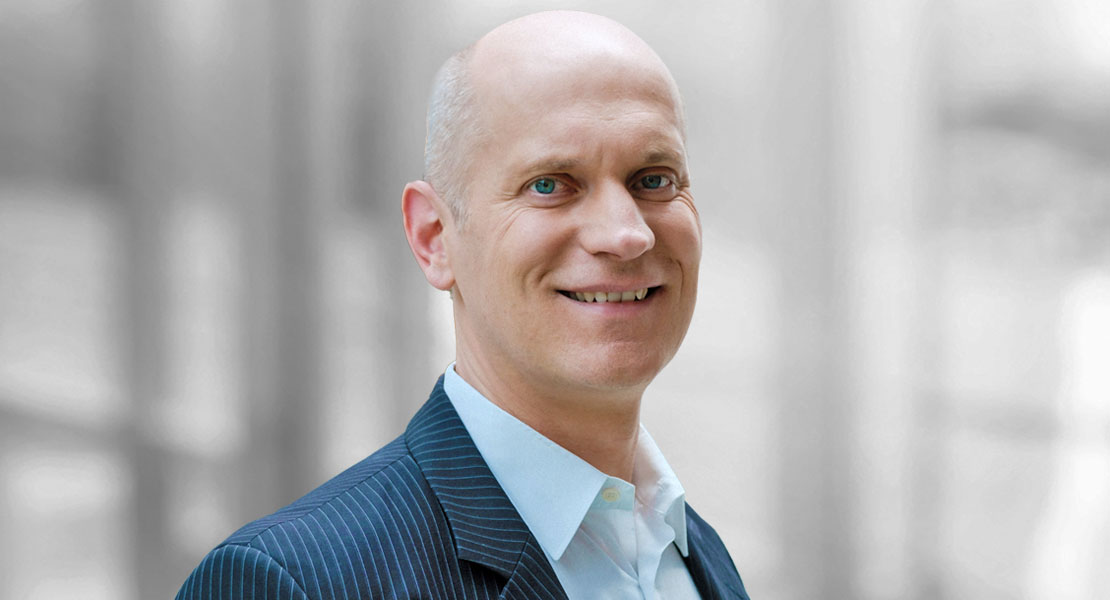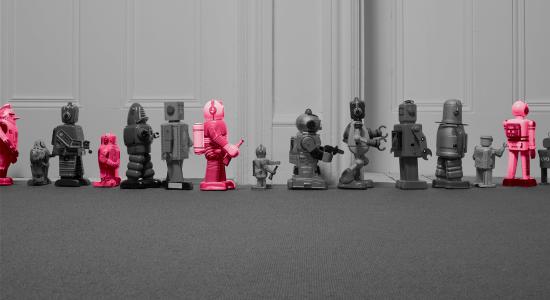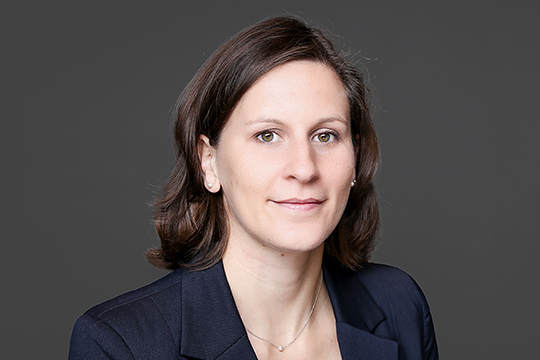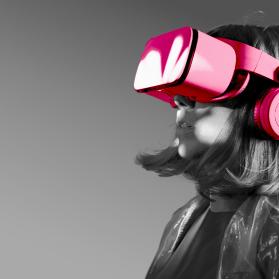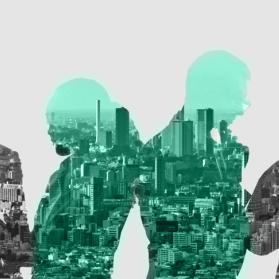Georg Pepping, Board Member and HR Director T-Systems, and his HR team prepared and directed Deutsche Telekom’s leap into a new world of work more than seven years ago. As sponsor of the We.Work.New project, he is in charge of structuring the second stage of evolution — the New Normal at T-Systems. In our series “Working in the New Reality,” Verena Vinke and Dr. Tanja Matt talk to him about the new working methods at T-Systems. Moreover, he also shares the lessons he has learned that may help other companies in realizing the future world of work.
Dr. Tanja Matt: The coronavirus crisis took us all by surprise at the beginning of 2020 and has profoundly altered the world of work. Will everything stay that way?
Many of the habits familiar to us before the onset of the coronavirus pandemic will return, but not everything. Just as going out for the evening or traveling will be possible, we will once again work in our offices or go on business trips. But presumably on a significantly different, namely smaller, scale. But in the same vein, many things that we have — by necessity — now practiced and learned during this crisis will stay with us. Something else that will remain and become even more important in the future is increased human-machine interaction, i.e., human collaboration supported by technology. At HR, for example, we will see this in recruiting or in training and development. We’re seeing only the beginnings of that now, and a lot of entrepreneurial capital is being invested at this very moment in HR tech that highlights the potential of these types of tools. I also see a sustained trend and greater awareness for the social aspects of work that have come into focus as a result of the pandemic; executives are not exempt from the risks of infection or home schooling. This shared experience, which I also see at T-Systems, leads to more awareness and empathy for one another. Topics such as “employee experience,” “mental health and well-being,” and “psychological safety” that generate a healthy and supportive work environment for teams are more highly valued.
Dr. Tanja Matt: What else is changing? Will virtual collaboration also evolve?
Absolutely! Seeing how the tools enable and support collaboration across spatial distances is not the only interesting aspect. What I find even more interesting is how this is changing collaboration per se. I see a democratization of work and a reduction of hierarchical distance because of the coronavirus pandemic. Virtual work from home and the use of video conferencing are reducing the gap between management and employees more and more; relationships are becoming more familiar, closer, more immediate. I’m delighted about this development.
Verena Vinke: What are the three greatest challenges facing T-Systems?
The first challenge is this: How can we secure the professionalization of this hybrid working world and turn it into a long-term success? And when I say success, I mean for our employees, for our customers, for our partner companies with whom we cooperate intensively, and for ourselves as a company. I am convinced that we are on the right track with our “activity-based working approach.” The tasks at hand determine where the work is performed. Virtual customer and creative workshops are certainly possible, but they are even more effective when people meet in person at one of our Meet&Connect Hubs. If the occasion is simply the sharing of information such as during a sales cadence meeting, the virtual format is better and simpler. Having these options allows us to improve the balance between work and personal life and create a win-win situation.
The second challenge is in the area of leadership and collaboration. The pandemic forced both managers and teams to begin working completely from home from one day to the next. The ways people communicated and collaborated changed abruptly. And leadership roles had to change as well.
The third challenge I see revolves around learning and skills management. The new ways of working require new skills.
Verena Vinke: We.Work.New is intended to increase productivity, reduce costs and boost employee satisfaction. Why these specific targets?
We even have a fourth goal: focusing the spotlight on our customers during activity-based working. In my opinion, the customer perspective and the employee perspective must always be focused. The goal of increasing productivity is the consequence of the first two goals if done correctly. And that’s what we want. And cost efficiency means doing away with unneeded office space. Only then can we make the investments in restructuring the remaining office space, in equipment and tools, and in empowering our managers and employees. The right balance must be found among these four pillars. If I focus solely on the goal of cutting costs, I will not be successful from either a customer or an employee perspective. Nor will we increase our productivity. The trick is to keep an eye on all four dimensions while simultaneously serving all four in equal measure. Many companies concentrate on only one of the four dimensions, and I think that is a mistake. And: it’s a process. Developing a concept is one thing. Implementing, evaluating, and subsequently adapting it as required by circumstances is something else entirely. This is where perseverance is needed to make We.Work.New and activity-based working a long-term success.
Verena Vinke: The issue of evaluation, i.e., measurability, often suffers from neglect with these types of targets. How do you avoid this for We.Work.New?
We work with OKRs, and the team used Power BI to develop a dashboard that makes the effects measurable. There are some aspects, such as cost savings, that I can measure in the short term. But of course the employee and customer dimensions are also interesting, although we will see the effects in these areas only in the middle to long term. We will also work a lot with surveys. You have to monitor these issues over a longer period of time and be open to making adjustments during different iterations.
Verena Vinke: Back in 2015, you took the first step into the modern working world with the Future Work program and mobile work. Now you’re ramping it up a notch. In what ways does a company like T-Systems have an easier time with this type of transformation than others?
As I see it, we enjoy two advantages.
To start with, we are a strictly IT company. We don’t just advise our customers on IT — we work with IT every day. It is only natural that the introduction and application of IT collaboration tools is easier for us than it might be for others.
Then, too, because we are a globally active company, we have always served our customers across the boundaries between locations and countries; collaboration without regard for borders and divisions is the reality of our daily lives and has always demanded a lot of virtual collaboration. But: as technology is a powerful driver of our company’s activities, we must avoid the trap of relying on the technical dimension alone. Just because the tools work doesn’t guarantee that our collaboration will be a success. We must never lose sight of the human dimension of collaboration.
Verena Vinke: So one might ask, what good is the most beautiful office, equipped with the latest technology, if we don’t convince people to join us?
That’s right. During video conferences, we urge participants to turn the video on! Because we humans have been trained to read gestures. Hearing what people say is relevant, but being able to read faces, to recognize emotions is even more important. This is how we ensure that everyone is actively participating. How do I make a meeting come alive? It can become boring and passive very quickly — of course, that can happen during in-person meetings, too. A session should never last longer than an hour and should be interactive. Or another thing: when we’re in a room together, you can usually tell if people agree with what’s been said. That is not necessarily the case during a video session. So you have to acquire the habit of asking follow-up questions. There are also a lot of techniques that we learn. It is a mistake to carry over what I know from in-person meetings into the virtual world — or vice-versa.
Dr. Tanja Matt: You have mentioned that completing the whole process will take two to three years. Let’s assume now that this time has passed. How would you be able to see what has been achieved through We.Work.New?
I would assess our achievement by considering the two dimensions of customers and employees. From the employee perspective, the key criteria would certainly be employee satisfaction, work-life balance, health. From the customer’s point of view, customer satisfaction is decisive. Our business model involves an extraordinarily high level of customer interaction. The way we work must also have an impact in this area.
Dr. Tanja Matt: Finally, one last question: What are the most important lessons you have learned from We.Work.New that you would like to pass on to other companies on their way to the New Normal?
There are several. The first lesson I learned is the need to approach a concept holistically. Simply reducing or redesigning office space is not enough. At the heart of the task is the development and holistic implementation of a suitable workplace concept and the associated work culture and leadership concept derived from the strategy and requirements of the business in which I work.
My second lesson is that the freedom of the individual to be able to work from home sometimes, at his or her own choice, falls short. I am thoroughly convinced of the value of the activity-based working approach. It’s not about giving employees the option to work from home for a day or two at their own option. Over time, that causes a fragmented world to emerge. From my point of view, the decision has to be made by the team. The question “What work are we doing?” should determine how and where we work and for what activities we come together in person, all with the aim of achieving the best possible result. And not only in terms of the work itself, but in terms of the social aspects of work, the human level behind and during work as well — the typical after-work beer, if you will.
My third lesson is that you must involve employees at every step, but especially at the first step (“designing the concept”), and let them have a hand in shaping its structure. Our surveys asking employees how we want to work, how we can best serve our customers and partners, what offices and tools we need to do that, and how our leadership and collaboration culture needs to change were tremendously useful for us.
The fourth lesson as I see it is the realization that you can’t do everything right the first time. You can and must devote plenty of thought to the development of a good concept. But ultimately, you have to pluck up the courage to take the plunge and simply give it a try. Only then will you see whether the concept is successful. In this sense, it was important to promise both employees and the works council that we would actively support the implementation process and also adapt the concept if necessary. For example, we deliberately made truly bold assumptions about how much space we would no longer need. If we determine in a few months that we in fact need more space, we’ll have to make the required adjustments. Only by actively accepting change do we become able to steer it. This is agile management at its heart: Plan — Do — Analyze — Adapt.
And a change process of this type — this is my fifth lesson — starts with you yourself. All the people involved must be willing to adapt — themselves and the way they work and lead — to activity-based working. A change of this depth will not work if it is not implemented throughout the company and if management in particular does not take the first step — “Leaders go first” is the motto. It certainly helped us here that we, the management team, moved into an open office space accessible to all back in 2018.
Thank you, Georg Pepping; we wish you and your team all the best for the future.
Georg Pepping has been Managing Director Human Resources and Labor Director at T-Systems since 2010. He began his professional career at Deutsche Telekom Group in 1997, working at T-Data Gesellschaft für Datenkommunikation mbH. Since 1999, he has held various positions at Deutsche Telekom AG’s corporate headquarters in Bonn, where he was in charge of fundamental issues in the department of “Conditions, Collective Bargaining, and Co-determination Policy,” most recently as director of the Human Resources Management (HRM) department at company headquarters.
Many thanks to Verena Vinke for her contribution to this interview.

